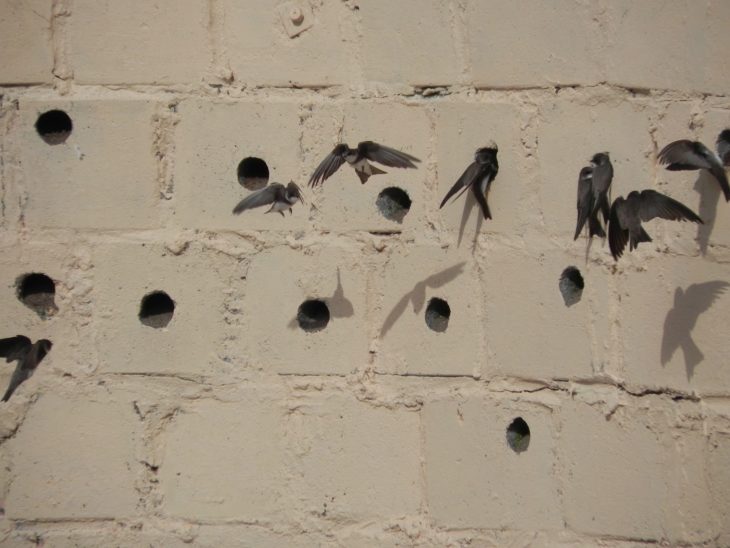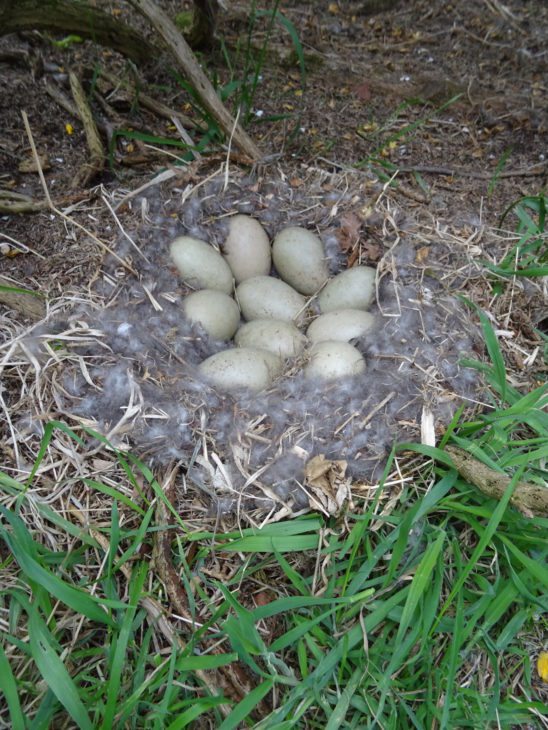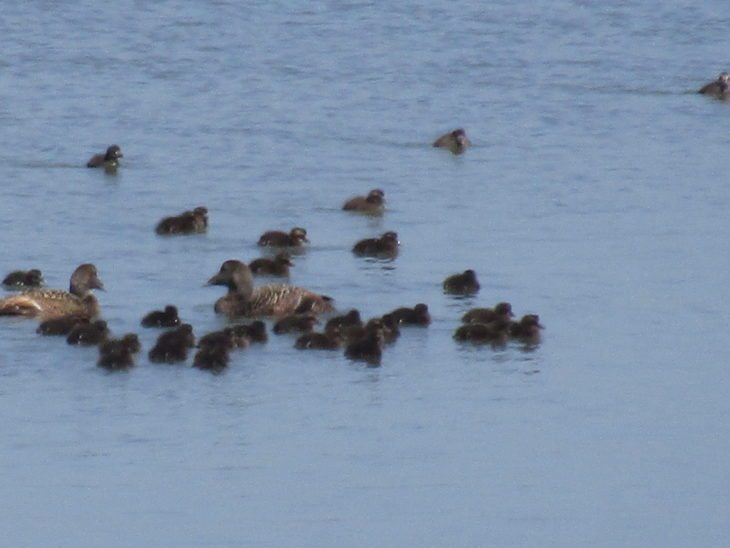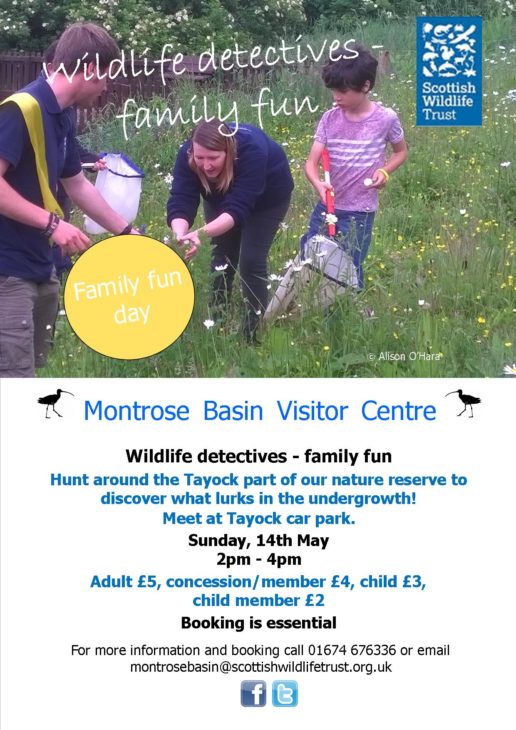Nests and chicks and eiderdown
Spring time is a busy time of year for birds, whether they’re migrating, attracting mates, making nests, or raising chicks. It’s been exciting to see this new flurry of activity from the birds that breed at Montrose Basin – our eiders have started making their nests, we have a pair of blue tits attempting to lay eggs in one of our bat boxes (?!), and the sand martins are pairing off and making good use of our sand martin wall. We saw our first common terns on the 5th of May (54 birds!), and I’m looking forward to seeing them roost on our tern raft. It’s something I’m always explaining to our visitors, but I haven’t actually seen it with my own eyes yet!

It seems the eiders have started building their nests a little early this year, with at least four nests having been spotted out by the Shelduck Hide on our reserve already. Eider ducks line their nests with eiderdown, plucked from the female’s body. This eiderdown was once quite widely farmed, used in pillows and duvets to make them cosy, soft and comfortable – the eider chicks are lucky to have such luxury bedding! The down is still farmed in some places (although not to the same extent) – the ducks don’t even need to be disturbed when collecting their ‘produce’; the farmers simply take the eiderdown from the nests once the chicks have fledged.

The eiders’ eggs should hatch after 25-28 days, so I’m hoping to see the first chicks sometime next month. I’ve never seen them in person, but by looking at the pictures in our database, I appear to have been promised groups of dozens of black fuzzballs – definitely something to get excited about. Each duck will only lay a maximum of 6 eggs, but female eiders work together and help look after chicks that are not their own – it’s been found that eiders will often nest in groups of closely related individuals, so it’s in their common interest to display a bit of teamwork and help raise all the chicks in the community. The female will form crèches, where a group of around a dozen chicks will be accompanied by a couple of adults, almost resembling two school teachers taking a group of children out on a walk. When some sort of threat is encountered (for example, a gull getting a little too close), the chicks will all huddle together, creating a giant black fuzzball, and the females will protect them from the outside.

Spring is always made all the more exciting and rewarding when you’re able to see the activity surrounding birds nesting and chicks fledging. Installing bird boxes in your garden is such a simple task that will be greatly appreciated by birds and humans alike for many years to come!
– Joanna Peaker (Social Media Intern)

Help protect Scotland’s wildlife
Our work to save Scotland’s wildlife is made possible thanks to the generosity of our members and supporters.
Join today from just £4 a month to help protect the species you love.
Preface
Spring time is a busy time of year for birds, whether they’re migrating, attracting mates, making nests, or raising chicks. It’s been exciting to see this new flurry of activity …
